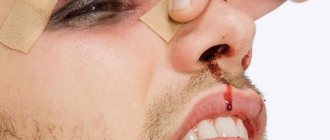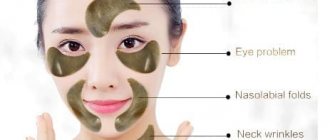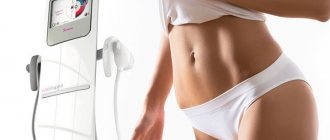Dr. Leonid Pavlyuchenko has been working in Moscow for more than 30 years.
In 2000, Professor L.L. Pavlyuchenko organized and headed the Department of Plastic Aesthetic Surgery of the RUDN University, which he currently heads. Every year, on average, about 50 cadets undergo internships with the professor in their primary specialization in plastic surgery.
Main areas of activity: nose surgery, facial surgery, breast surgery.
Our awards and certificates
Forehead surgery is an operation that is very popular. Its goal is to smooth out horizontal and longitudinal wrinkles, tighten sagging eyebrows and outer eyelids. After the procedure, the face becomes more attractive, open and symmetrical.
Such plastic surgery in Moscow is performed on men and women, usually after the age of 40. The procedure can also be performed at an earlier age if visible signs of aging and excess skin overhanging in the frontal area appear.
Indications
- Complaints about a sad, tired, heavy look.
Transverse wrinkles in the frontal region.
Deep folds between the eyebrows.
Heavy drooping eyebrows, creating excess skin on the upper eyelids.
A photo of forehead plastic surgery allows you to compare the effect “before” and “after” the operation. Nowadays, surgical intervention is based on the endoscopic method, which eliminates the formation of noticeable scars and scars. The incision is usually made in the scalp. The surgeon performs a lift from above, reduces the amount of fat deposits and fixes the facial muscles. As a result, even deep wrinkles are smoothed out, appearance and facial expression change for the better.
Forehead surgery: before and after photos
Example 4. The patient has low eyebrows and drooping upper eyelids. An isolated forehead lift was performed, resulting in an “open look” effect, eliminating the need for upper blepharoplasty.
Example 5. Endoscopic forehead surgery in a patient with “heavy” upper eyelids and drooping outer two-thirds of the eyebrows. A brow lift “removed” excess tissue from the upper eyelids. Eyelid surgery was not performed. The result is an open look, smoothing the outer part of the periorbital area, raising the eyebrows, smoothing the skin of the forehead.
Who is recommended for forehead skin correction?
Forehead skin resurfacing is typically performed on women and men between the ages of 40 and 60 to reduce the outward signs of aging. However, this procedure can be recommended for people of any age who have wrinkles, as well as people who want to get rid of drooping eyebrows.
Correction of the forehead skin is often performed together with correction of the skin of the face and neck in order to ensure maximum effect, since the smooth skin of the forehead after correction can stand out against the background of wrinkled skin of the face or neck.
Eyebrow correction may not lead to the desired result if the patient has drooping upper eyelids. In this case, correction together with eyelid correction gives excellent results.
Planning your correction
To imagine how forehead skin correction will change your appearance, do the following experiment: stand in front of a mirror and use your fingers to lift your eyebrows and forehead skin. Approximately the same effect can be achieved using this correction.
During your initial consultation, your doctor will examine your face, including the skin, facial muscles, and skull bones. You will need to tell him about some of the peculiarities of your body (high blood pressure, poor wound healing, etc.). If you have already made any corrections to your face, be sure to tell us about it. Issues related to smoking, as well as taking medications, including aspirin and vitamins, should be specifically addressed.
The doctor should describe the procedure in detail, explaining any possible limitations and uncertainties. Be sure to discuss all your questions with him.
Preparation for correction includes full compliance with all instructions that were given to you during consultations. It should be noted that in preparation for correction the hair is not cut.
- The recovery period after correction is very short, so you will be able to return to your daily activities within 7-10 days after correction.
The vast majority of patients are satisfied with the results of the correction and experience a new feeling of returning to their youth. At the same time, the correction does not stop the passage of time, and age continues to increase. However, due to the correction, an age difference is created that persists for the rest of your life.
After some time, you can repeat the correction to improve your appearance again.
Frontoplasty is performed for aesthetic reasons. There are no medical indications, that is, body conditions that negatively affect the patient’s health and quality of life, for frontoplasty.
The dominant motive for turning to a plastic surgeon is dissatisfaction with appearance, namely with the way the frontal region and the upper third of the face as a whole looks. A source of dissatisfaction may be a forehead that is too high or low. The problem may be an increase in the frontal tuberosities in the frontal or lateral projection or their flattening due to developmental disorders of the facial skeleton. Excessive or asymmetrical brow ridges are another common problem.
Many people are concerned about age-related changes in the form of wrinkles, ptosis of the eyebrows, a vertical furrow above the bridge of the nose, and drooping of the lateral corners of the eyes. Although age-related changes are not a direct indication for forehead surgery, they can be corrected during frontoplasty while improving the shape, height and symmetry of the frontal area.
Frontoplasty is of interest not only to the fair sex. Men turn to plastic surgeons for congenital and acquired defects. The most common “male” problems include deformation of the frontal region as a result of injury received at work, in an accident, at home, or during sports.
Types of frontoplasty
Augmentation frontoplasty is performed by installing implants or lipofilling. The same methods are used to correct asymmetry. To reduce the height and projection of the forehead, manipulations are performed on the frontal bone.
The strategy, tactics and methods of surgical correction are determined by the specifics and severity of the aesthetic defect. Other factors are also taken into account, in particular, the anatomical features of the facial skeleton, age, gender, condition of soft tissues and hair.
Frontoplasty with reduction of forehead height
Surgeries aimed at reducing the height of the forehead involve manipulation of the frontal bone. During reduction frontoplasty, the surgeon can reduce the thickness of the bone by grinding with special cutters or open the frontal sinuses with subsequent treatment of the septa, removal of bone bridges and recessing of the bone covers.
When reducing the height of the forehead, manipulations are carried out without contact with the intracranial surface of the frontal bone!
Frontoplasty with increasing forehead projection
An increase in the projection of the frontal tuberosities or forehead height is achieved through the installation of implants. Currently, three types of endoprostheses are used in facial plastic surgery:
- Silicone implants.
- Implants made of porous polymer.
- Implants made from your own cartilage tissue.
The best material is considered to be implants made from cartilage tissue grown from the patient's stem cells. Such implants have full antigenic compatibility with body tissues and do not cause a response from the immune system. Cartilaginous tissue is integrated into the histological structure of the recipient zone, grows with blood vessels and does not have a negative effect on the frontal bone.
Silicone and polymer implants are immunologically inert and do not cause allergic reactions or an immune response. Their disadvantage is that silicone and porous material is foreign to the body, and therefore is delimited from surrounding tissues by a capsule of fibrous tissue.
Access for frontoplasty is above the hairline. The surgeon makes an incision from ear to ear, separates the soft tissue and exposes the bone, and then performs the necessary manipulations. The scar after forehead surgery is hidden under the hair and, in fact, invisible.
Frontoplasty in a complex of rejuvenating operations
Simultaneously with changes in the height and projection of the bone, rejuvenation of the frontal region can be performed during the operation. The surgical approach used in frontoplasty allows one to lift drooping eyebrows and the lateral corners of the eyes. According to indications, excess skin is removed and soft tissue is moved in the superolateral direction.
Combining frontoplasty with anti-aging surgeries provides maximum and natural aesthetic results. The patient receives the effect of several plastic surgeries during one recovery period.
Preparation for frontoplasty
In preparation for frontoplasty, a full medical examination is prescribed. The operation is performed under general anesthesia and lasts about two hours. To minimize operational risks, the surgeon and anesthesiologist must have complete and up-to-date information about the patient's health status. According to indications, additional methods of laboratory and instrumental diagnostics are prescribed, as well as consultations with specialists.
A mandatory stage of preparation for frontoplasty is computed tomography of the frontal region. The purpose of the diagnostic procedure is to determine the size of the sinuses of the frontal bone and the thickness of the bone tissue. Additionally, facial anthropometry is performed to assess the proportions of the facial skeleton. CT and anthropometry data are used in computer modeling of the results of the operation.
Rehabilitation after frontoplasty
The duration and complexity of the rehabilitation period depends on the specifics and scope of the surgical intervention. Recovery after frontoplasty with the installation of implants is faster and with minimal discomfort. If bone tissue was affected during the operation, swelling, minor pain, and hematomas persist for 7-14 days.
Symptoms of the recovery period are successfully relieved by taking analgesics and anti-inflammatory drugs prescribed by the operating surgeon. To reduce swelling, you can apply cold compresses to the frontal area. A proper diet with a minimum of salty, hot and spicy foods with a maximum content of vitamins, microelements and protein helps speed up recovery.
It is imperative to follow the rules of the recovery period specific to frontoplasty:
- For 2 weeks after frontoplasty, you need to sleep on high pillows or with the head of the bed raised.
- In the first few days, you should not wash your hair or comb your hair.
- Until complete recovery, you should use only soft combs.
One of the symptoms of the recovery period after frontoplasty may be a feeling of discomfort and heaviness in the eye area. This is a temporary phenomenon caused by swelling of the tissues located in close proximity to the surgical area. Numbness of the skin of the frontal area is also possible. Sensitivity of the skin is restored as the tissue heals and swelling decreases.
Contraindications to frontoplasty
- Age up to 18 years.
- Incomplete growth of the facial skeleton.
- Chronic endocrine, somatic or cardiovascular pathology in the stage of decompensation.
- Oncological disease.
- Acute or chronic frontal sinusitis.
- Inflammation of the skin in the forehead area of infectious, autoimmune or allergic etiology.
- Lactation, pregnancy.
The rapid development of the pharmacological and cosmetological fields of medicine makes it possible to maintain youth and beauty at the proper level for many years. However, due to the deterioration of the environmental situation, the acceleration of internal aging mechanisms, and frequent stress, cosmetic products do not always give the desired effect. It is in such cases that plastic surgery is used. The most popular of all plastic surgeries is a forehead and eyebrow lift.
Technique for frontoplasty of the forehead and brow ridges
The nature of the changes that the intervention provides concerns the size of the forehead and the location of the brow ridges. They can be combined, or during frontoplasty only one defect is corrected. The operation lasts from 2 to 3.5 hours, the duration is determined by the scale of the necessary changes.
How does an increase or decrease in forehead height occur?
Correction of the size of an aesthetically unsatisfactory area is carried out according to a similar scheme:
- First, the doctor makes marks on the skin with a marker. This is necessary for the accuracy of cuts and improvements in different areas.
- The patient is given anesthesia. Then you need to wait for it to take effect.
- Using a scalpel, the doctor makes an incision along the hairline. Its length ranges from one ear to the other.
- The features of the main stage depend on the existing shortcomings and the desired effect. If the forehead needs to be reduced, the bone bridges are removed and the surface of the bones in the area of the frontal tubercles is polished. For the last step, special cutters are used. At the end of these manipulations, the scalp is moved slightly downward. If it is necessary to make the forehead more convex or increase the size, an implant is installed.
You can also add volume by transplanting your own tissue, such as fat. The same techniques are used for asymmetry. Both frontal lobes are corrected by resurfacing the bone or adding volume with an implant.
- After the main stages of correction, including the removal of part of the skin tissue when reducing the forehead, the wound is sutured. The operated area is protected with a sterile bandage.
To learn how frontoplasty is performed, watch this video:
How is brow ridge correction performed?
If in general the height of the forehead is satisfactory, but in the eyebrow area it sticks out too much or, conversely, looks too smooth, this defect can be corrected. The operation includes several stages:
- Access to tissue. This is done through a zigzag incision in the hairline or eyelid area. In the latter case, frontoplasty can be combined with blepharoplasty.
- Peeling of the skin flap. It rises until the frontal sinuses open. These areas are exposed so that the mucous membrane and bone bridges can be seen.
To make the forehead more feminine, the latter are removed. The edges of the bone in the area of the brow ridges are polished with a medical cutter. If it is necessary to enlarge this area, implants are placed. The edges of the brow ridges do not undergo any other changes.
- Movement of bone fragments. They are placed in a new position, at a different angle, controlling the nerve connections, and fixed with medical glue or titanium plates. Sometimes, in conclusion, excess skin tissue that appears due to a decrease in bone volume is excised. The operation is completed with stitches and a bandage.
Who is the operation indicated for and what are the conditions for its implementation?
Most often, brow and forehead lifting is indicated and most in demand for patients over 40 years of age to reduce the manifestations of the first signs of aging. However, if necessary, it can be performed at an earlier age on the recommendation of a doctor or based on one’s own considerations. The indications are as follows:
- drooping of the outer corner of the eye caused by ptosis of the upper eyelid;
- drooping tissue of the upper third of the face;
- deep wrinkles and folds of the forehead and bridge of the nose;
- low eyebrows;
- small wrinkles in the corners of the eyes (“crow’s feet”);
- loose skin in the temporal areas;
- sagging skin on the bridge of the nose.
Depending on the severity of the aging process and the indications for lifting the upper third of the face, specialists from aesthetic surgery clinics may recommend the following types of forehead and eyebrow lifts.
Indications for frontoplasty
Forehead correction surgery is performed for a number of deficiencies:
- asymmetry of its sections;
- excessive size that violates the overall proportions of the face;
- small size;
- forehead too protruding, overhanging brow ridges;
- wrinkles;
- defects acquired due to injuries (lumps and dents).
Frontoplasty is performed on men and women. It is also indicated in combination with other interventions carried out during gender reassignment. The operation is performed for aesthetic reasons, if the patient’s own appearance does not suit him and provokes the development of complexes.
Coronary lift (open front lift)
Coronal lift has long been considered the “gold standard” of plastic surgery for this anatomical region, but recently it is recommended to be performed only on patients with severe wrinkles on the forehead, severe ptosis of the eyebrows, and excessive overhang of skin in the glabella area.
Forehead and eyebrow lifting using the open coronary lift method is performed under general anesthesia. The operation is traumatic, since all soft tissues are affected, including the periosteum. The duration of plastic surgery is 1-2 hours. After a thorough examination, your doctor will recommend one of three possible incisions: standard, modified, or hairline incision.
Standard
This lift option is indicated for patients who need to straighten the proportions of the head. The essence of the method is to carry out a bicoronal incision made directly behind the hairline (at a distance of 8 cm) from the forehead to the auricle on both sides, followed by tension and excision of excess skin. The incision has a zigzag shape, which allows the scar to be almost invisible. The standard incision is not suitable for patients with a high forehead, as the hairline moves back several centimeters.
Modified
The modified incision has a slightly different direction: starting near the temporal region, it bends in the forehead, follows the hairline and returns to the temple. With this incision option, the width of the forehead after surgery can be reduced by lowering the hairline.
Incision along the marginal hairline
An incision along the marginal growth line is best suited for patients with receding hairlines in the forehead and temple area, as well as with a high forehead, since the height of the forehead does not change after surgery.
The essence of the method is to excise a strip of skin 1-2 cm wide, after which sutures or staples are applied, which are removed 10-12 days after the operation. Immediately after the plastic surgery, drainage is installed.
Types of coronal incision
The main advantage of the method is the long-term preservation of the result and the absence of noticeable scars. In addition to the obvious advantages of eyebrow and forehead lifting using the coronal lift method, there are a number of its significant disadvantages:
- violation of the usual facial proportions due to changes in the marginal hairline;
- a high level of tissue trauma during surgery and a high risk of complications after it is performed;
- possible numbness of the plastic surgery site for six months;
- impaired hair growth in the incision area;
- long rehabilitation.
Coronary forehead lift method
Endoscopic front lift
Endoscopic forehead and eyebrow lifting is performed under general anesthesia and is completed within 1-4 hours, depending on the amount of work. Endoscopic lifting can be recommended for patients of all categories. The exception is for persons with very deep forehead wrinkles, pronounced ptosis of the eyebrows, and a high forehead. Endoscopic face lifting is the main method of choice for the correction of wrinkles in balding men.
Method of performing the operation: several incisions (up to 5) about two centimeters long are made in the temporal and frontal areas in the immediate vicinity of the hairline. Through them, endoscopic instruments are introduced, which dissect certain muscles responsible for the formation of longitudinal wrinkles on the forehead, and also raise the eyebrows to the required level and are fixed. Thanks to the use of endoscopic instruments, quick and precise execution of the task is achieved, thereby reducing the risk of developing serious complications and the amount of possible blood loss.
Its main advantages are low invasiveness, low risk of complications, high efficiency and visible results, quick recovery.
Preparation
In order for forehead correction surgery to be as successful as possible and with minimal complications, it is necessary to properly prepare for it.
Changing the frontal zone is considered a complex manipulation. Therefore, before the operation is performed, the patient must first visit a specialist. At the appointment, the doctor not only collects anamnesis and determines how possible the use of such tactics is, but also carefully plans all further actions of the work.
READ ALSO: Unibrow in men and women: what is sinophrysis
It is important to carefully calculate the parameters, bone configuration, and determine how the bone septa and frontal sinuses are located. For this purpose, a computed tomography or teleroentgenogram is prescribed.
In addition, the client must undergo laboratory testing, which includes:
- general analysis of urine and blood;
- biochemistry to determine the level of coagulation ;
- test for identifying infectious pathological processes.
On this topic
How to remove jowls and tighten the oval of the face
The doctor also gives a referral for an electrocardiogram and fluorography.
If as a result of the examination no contraindications were identified, then the date of the operation is set.
The preparation stage involves following some recommendations. You must stop smoking and alcohol no earlier than 14 days before. It is also necessary to stop taking medications, the effect of which can negatively affect blood clotting.
You will also need to consult an anesthesiologist, since the surgical procedure involves the administration of general anesthesia. It is important to inform your doctor about all medications you are taking, as well as the likelihood of allergic reactions, if such have happened before.
Lifting using endotins
Facelift using endotins is an endoscopic method, therefore it has virtually no contraindications and has a wide range of applications. The procedure is performed under general anesthesia and lasts about half an hour. The essence of the technique is to install very thin absorbable plates through mini-incisions, which have guide immobilizer spikes. On average, six months after the operation, complete resorption of endotins occurs, and the collagen fibers formed in their place provide a lifting effect for a long time. The main advantages of this operation are:
- precise and reliable fixation of plates;
- minimal risk of complications due to the low invasiveness of the operation itself;
- complete resorption and elimination of the drug from the body within six months;
- no risk of developing rejection reactions or allergies;
- fast recovery period.
Today, this method of facial correction has virtually no disadvantages. Read more about the use of endotins.
Cost of frontoplasty to correct the shape of the forehead and brow ridges
Intervention to correct the forehead is a technically complex manipulation that requires high qualifications and sufficient experience from a plastic surgeon and the availability of special equipment. Therefore, its cost is high. The use of implants increases the price, especially when they have to be made individually. If you do frontoplasty in Russia, it will cost at least 100,000 rubles.
Surgical correction of the forehead is not performed for health reasons. If you can improve this part of the face with makeup and hairstyles, you may want to avoid surgery. But if there is no other option, you need to do it, making sure of the surgeon’s qualifications and following the recommendations.
Similar articles
- Space lifting: before and after the procedure, what the face looks like
The space lifting procedure before and after gives a significant effect for problem areas of the face. It is important to know all the features of its implementation and recovery in order to get the maximum result. Read more - Sunken cheeks: how to create the effect, how to remove it using...
Sometimes sunken cheeks become a dream, and sometimes they become a serious problem. How to make the effect of sunken cheeks? How to get rid of them using contour plastic surgery or surgery? Read more
- Cheekbone plastic surgery and shape correction with fillers…
Correction of the shape or plasticity of the cheekbones may be required for both excessively large and small sizes. There are several options for how it is done: fillers, hyaluronic acid, implants. And although the methods are quite safe, there are also unsuccessful corrections. Read more
- Complications of abdominoplasty: as often happens...
You can get your stomach in order with abdominoplasty. However, although the effect is wonderful, complications of ajudominoplasty are not uncommon. How often does abdominoplasty fail? What are the complications after? Read more
Temporal brow lift method
The operation can be performed either under local anesthesia or general anesthesia. The method of anesthesia is determined by the doctor, taking into account all the characteristics of the patient and the upcoming procedure, which usually lasts no more than 45 minutes. The method is based on making incisions in the temple area and excision of excess skin. Thanks to this method, wrinkles are smoothed out, the outer corners of the eyes are lifted, and the cheekbone area is tightened. Eyebrow correction using the temporal lift method can be combined with other cosmetic and plastic procedures.
The temporal lift is a low-impact and highly effective operation, and also has virtually no disadvantages or contraindications, therefore it is widespread among patients in aesthetic medicine clinics.
Thread lifting of forehead and eyebrows
The duration of the procedure is 20-30 minutes and is performed under local or general anesthesia. The technique is based on implanting special threads under the skin, which, when properly fixed, provide a good lifting effect. Threads can be absorbable or non-absorbable.
Rehabilitation period
The classic rehabilitation period after correction of eyebrows and forehead is from 14 to 20 days. If stitches were applied, they are removed on day 10-11. After 14-15 days, bruises and swelling almost completely disappear. Temporary loss of sensation may occur for about three weeks after surgery. In the postoperative period, it is recommended to take antibacterial agents, avoiding increased physical activity and hot baths.
Contraindications and possible postoperative complications
Contraindications to most plastic manipulations are:
- diseases of the cardiovascular system;
- arterial hypertension;
- blood diseases;
- diseases of the endocrine system;
- infectious diseases;
- malignant neoplasms.
Complications are: numbness of the forehead and temples, inflammatory changes on the face, displacement of the hair growth line, infectious complications.
Video of frontal endoscopic lifting
Frontoplasty belongs to plastic surgery and can help to increase a small forehead or reduce a high forehead. It is often correlated with the performance of rejuvenation manipulations, which is included in the facelift procedure. In this article you will learn what frontoplasty is and where it is done.
Preparing to correct the shape of the forehead and brow ridges
Before undergoing surgery, the patient must go through a preliminary stage. An examination is necessary to confirm the absence of contraindications, and also to identify the structural features of the forehead bones and the size of the sinuses. It includes:
- general urine analysis;
- blood tests (general, biochemical, coagulation, infection);
- ECG;
- fluorography;
- computed tomography of the forehead and paranasal sinuses.
Then the patient awaits a consultation with a surgeon, during which the nature of the necessary changes to obtain the desired result is determined. A conversation with an anesthesiologist is also necessary, since general anesthesia is used during the operation. You should tell your doctor about all medications you are taking and any allergies you have had.
At the preparation stage, that is, 2 weeks before surgery, you should not drink alcohol, take blood thinning medications, and it is advisable to quit smoking.
Indications and contraindications for the procedure
If you dare to undergo this procedure, you need to make a visit to the Plastic Cosmetic Surgery Clinic, which specializes in solving aesthetic issues. The dominant argument for a visit to the doctor is dissatisfaction with external data, and directly with the forehead area. Often people are not satisfied with a large or too low forehead, so the question will be either reducing or adding volume. Excessive or slanted arches above the eyebrows are one of the most common issues.
Thus, people aged 35 to 60 years who seek to correct:
- horizontal and vertical wrinkles on the forehead;
- sagging eyebrows;
- excess skin in the outer corner of the eye and eyelids;
- correct your facial expression.
Frontoplasty is contraindicated for minors under 18 years of age, pregnant women and nursing mothers, patients with tumors, metabolic disorders, blood clotting pathologies or acute diseases.
After frontoplasty, temporary discomfort may occur, especially headaches, minor bleeding, puffiness, and loss of sensation in the area of the operation.
Acceptable complications include:
- postoperative hematoma,
- necrosis of the skin in the area of the sutures,
- damage to the external branches of the nerve during surgery (occurs extremely rarely),
- the appearance of hard scars after the invasion (this can only be corrected surgically),
- infection in the wound,
- skin coloring,
Before you dare to have the procedure, you will need to meet with the doctor. Discuss with your doctor all possible types of surgery, down to the smallest details. You will talk to people who have already undergone this operation and recovered after it. Thus, frontoplasty requires time to prepare, and you can see the difference before and after the operation by examining the patients of a particular doctor.
Contraindications to surgery to reduce or enlarge the forehead
Some patients, despite the presence of forehead imperfections, do not undergo surgery. Reasons for refusal may include:
- inflammatory process developing in the tissues of the corrected area;
- cancer;
- pathologies in which blood clotting is impaired;
- severe diabetes;
- any infection;
- exacerbation of a chronic disease;
- inflammation or infection in the frontal or nasal sinuses;
- age under 18 years;
- predisposition to the formation of keloid scars.
We recommend reading about forehead and brow lift. You will learn about different methods of lifting the forehead and eyebrows, indications and contraindications for the procedure, rehabilitation, and possible complications. And here is more information about the fashionable spacelifting procedure.
Type of frontoplasty
The operation to enlarge and correct irregularities is carried out using prostheses. To reduce the height and projection of the forehead, manipulations are performed on the forehead bones.
The strategy and methods of correction are determined by the nature and severity of the flaw. Other conditions are also considered, for example, congenital characteristics of the external skeleton, age, gender, location of soft tissues and hair growth.
Procedure to reduce the height of the frontal part
This operation involves working on the frontal bone. During the reduction process, the surgeon is able to reduce the thickness of the bone with the support of grinding with special attachments or to open the sinuses of the frontal zone.
Procedure to increase forehead projection
This problem is solved by installing three types of prostheses:
- silicone,
- made of sponge polymer,
- from human cartilaginous matter.
When choosing, you should consult a doctor who will determine the best option specifically for your case. However, the option made from the patient’s stem cells is more often used. They are perfectly compatible with body tissues and do not activate counter-reactions of the immune system. The operation is carried out in the direction of hair growth.
The doctor creates a section from ear to ear, isolates the delicate tissue and exposes the bone. Then carries out the required manipulations. The scar after plastic surgery is hidden under the hair and, in fact, is hardly noticeable.
What it is
Frontoplasty is an operation to change the shape of the frontal area. Depending on the wishes of the patient and the available indications, this manipulation can be performed in two ways:
- Implant installation . Involves inserting a prosthesis through a surgical incision. It is more popular because it allows you to fight various defects and makes it possible to obtain a lasting effect.
- Lipofilling . This is a procedure characterized by pumping out excess body fat, which, after multi-stage cleansing using injections, is injected under the skin in the forehead area. The advantage of this technique is that it is less traumatic. The disadvantages include short preservation of the result.
On this topic
How to remove a double chin with injections
The procedure is especially popular among people from 35 to 60 years old who want not only to eliminate anatomical imperfections, but also to correct skin defects associated with age-related changes.
The main advantage of frontoplasty is that with its help you can achieve significant changes in appearance. Among the disadvantages are a long recovery period, the presence of unpleasant sensations and a high risk of developing serious consequences.
Forehead surgery can be performed completely over the entire area or partially. There are several types of such surgical intervention.
Reduction of the frontal zone
This involves performing a major osteotomy. The process separates the soft tissue, allowing access to the frontal bone. During forehead reduction surgery, excess bone is removed and resurfaced. They can also open the sinuses of the frontal zone and reduce the border of hair growth.
Increase
To perform this task, the surgeon uses prosthetics. In this case, implants are installed in advance, for the production of which silicone, own cartilage tissue or polymer materials are used.
READ ALSO: Gozias before and after plastic surgery: how Alexandra changed her facial features
To determine which option will be optimal, it is recommended to consult a specialist. In most cases, preference is given to products made from the patient's stem cells. They are maximally compatible with the human body, which significantly reduces the likelihood of their rejection. Surgery must be performed in the direction of hair growth.
The doctor makes an incision from ear to ear and lifts the tissue to expose the bone. After this, the required manipulations are carried out. The scar that appears will be barely noticeable to others, since it remains under the hair.
Complex intervention
This is one of the most popular and common options for frontoplasty. In this case, the method of reducing or enlarging the forehead is combined with lifting.
No less popular are methods that involve simultaneous plastic surgery of the frontal area, cheekbones, chin and nose. Thanks to complex manipulations, you can completely change a person’s appearance.
Complex frontoplasty for rejuvenation
Along with the modification of the height and projection of the bone during the action, it is likely to perform rejuvenation of the area. So, you can raise lowered eyebrows and the lateral corners of the eye. Based on confirmation, excess skin is removed and delicate tissues are moved upward. Frontoplasty with rejuvenation provides a more natural appearance.
Preliminary preparation and implementation of the operation
This correction option belongs to complex surgical interventions. First, it is necessary to create a new image of the entire upper area of the face. Secondly, the walls of the frontal sinuses should be transformed. Most of all, changing the forehead relief is combined with other manipulations, for example, changing the nasal bar, adjusting the configuration of the cheekbones.
Preparatory work is aimed at the following actions:
- To establish the configuration of the frontal bone, the extent of the frontal sinus and the placement of bony septa, the patient is assigned a tomographic study.
- Then the cut line is determined and marker marking is made.
- The curls are gathered into a bun.
- The person goes to the surgery room on his own.
Endoscopic frontoplasty is performed only after a full examination and consultation with a qualified doctor. The operation is carried out as follows:
First, the person is given anesthesia, which must be general (under local anesthesia, similar manipulations are never performed). The surgeon then makes a large incision across the forehead approximately where the hairline is. After this, one of the following operations is carried out:
- Implants are inserted.
- Any part or an entire section of the bone is removed completely.
- It is possible that the patient's own fat tissue will be implanted.
- To change the height, move the hairline.
- The appearance of the brow ridges changes.
- Stitches and a special bandage are applied over them.
The postoperative period is quite difficult and takes a long time. During the first two weeks, while the stitches are still in place, swelling of the frontal area, hematomas, and pain can be observed. Skin sensitivity often disappears, but it returns over time. In addition, postoperative scars can cause inconvenience, as they last for a long time and look unsightly.
Do not forget that this operation is a very important procedure. Therefore, of course, choose only experienced and sufficiently trained doctors to ensure that this operation is done safely.
Results after execution
As after any surgical intervention, after adjustment a rehabilitation period is required, which can last up to a month. Taking anti-inflammatory and pain-relieving substances can help reduce discomfort and speed up tissue healing.
Rehabilitation has the following characteristics:
- Swelling will be visible for a couple of weeks, and over time it will begin to move from the forehead to the lower parts of the face;
- hematomas are observed, which are a consequence of vascular injury;
- painful sensations also make themselves felt over several days, especially in the head, forehead and eyes;
- after a week, you can carry out procedures for washing your hair and combing your hair;
- avoid infectious pathologies, therefore painkillers and medications are required during the rehabilitation period;
- seams must be treated with antiseptic agents up to two times within 24 hours;
- The doctor removes them after 10 - 12 days;
- to alleviate pain you need to sleep on a high pillow;
- There is no need to stay in one state for a long time during the rehabilitation period, you need to move around;
- serious sports activities must be postponed for a month;
- during the rehabilitation period, you should not go to the steam room, and replace taking a bath with a slightly warm shower;
- To avoid blood clots, you should drink plenty of fluids;
- You should avoid tanning and any exposure to sunlight for 3 months.
You can evaluate the results for the first time after a month. It is preferable to be at home for the entire period of time, doing only renewal and not worrying. And after 3 months, the final result after the operation will be noticeable, because the tissue will already heal and the scars will disappear.
Reviews
Since not many people decide to carry out this correction procedure, feedback about the procedure can only be obtained from the patients themselves. But those clients who have undergone surgery are advised to contact a surgeon only in extreme cases - in the presence of significant deficiencies.
Because for the sake of beauty and elegant appearance, I had to go through a difficult recovery time, as well as pain. Since the operation contains a large number of minor manifestations, hospital clients believe that it is preferable to hide the irregular shape of the forehead under bangs or make corrections through the skill and services of a makeup artist. However, if you decide to undergo this procedure, it is better to be 100% confident in the doctor’s competence and experience. In the hands of a qualified doctor, new methods will become a powerful tool for improving your appearance.
Surgery generates interest not only among women. The male sex turns to surgical services on the pretext of natural and acquired imperfections. More popular issues include deformation of the frontal region due to injury acquired at a factory, after an accident, or during sports.
Follow your doctor's orders strictly and come to the hospital as often as possible for examinations and consultations. And after that, decide whether it is worth going through such an operation and whether you are afraid of the consequences.
Rehabilitation period
Recovery after frontoplasty takes a long time and is accompanied by noticeable discomfort. Hematomas, swelling, and pain last for 2–4 weeks. External negative manifestations can smoothly move to the middle, lower part of the face.
The fixing bandage is removed after 5–10 days. The surgeon often recommends using a bandage at night. The stitches are removed after 10–14 days. During the recovery period, you will have to care for the wounds to prevent infection. The doctor will recommend sleeping on a high pillow, moving more without overexerting, eating right, and drinking enough fluids.
The surgeon must comply with restrictions that affect the speed of recovery. For 1–3 months exclude:
- physical stress (sports, hard work);
- steaming (bath, washing in hot water);
- exposure to ultraviolet radiation (tanning in the sun, in a solarium);
- swimming in the pool, open water.
It is recommended to avoid visiting public places for 2 weeks. It is advisable not to wash your hair, use cosmetics, or perform skincare procedures for up to 10 days. The surgeon regularly invites you for examinations. Restrictions are being lifted gradually. The doctor may additionally prescribe anti-inflammatory drugs, antibiotics, painkillers, and indicate the need for physical therapy or other care.
The effectiveness of the intervention is assessed after initial rehabilitation: after 1–3 months. Mild swelling may last up to 3–6 months. At the same time, the sutures are completely scarred and hair growth is restored.
Attention! The full result is assessed 6–12 months after surgery. The result of bone changes is permanent, the lifting effect lasts up to 5–10 years.











